Since 1799, the Palais du Luxembourg has been home to the Senate, the upper chamber of the French Parliament, which, along with the National Assembly, holds legislative power.
What is the history of this palace? And what can you see? In this article, you’ll find an overview of the Palais du Luxembourg, plus a few explanations of how the Senate works and what its role is!
History of the Palais du Luxembourg
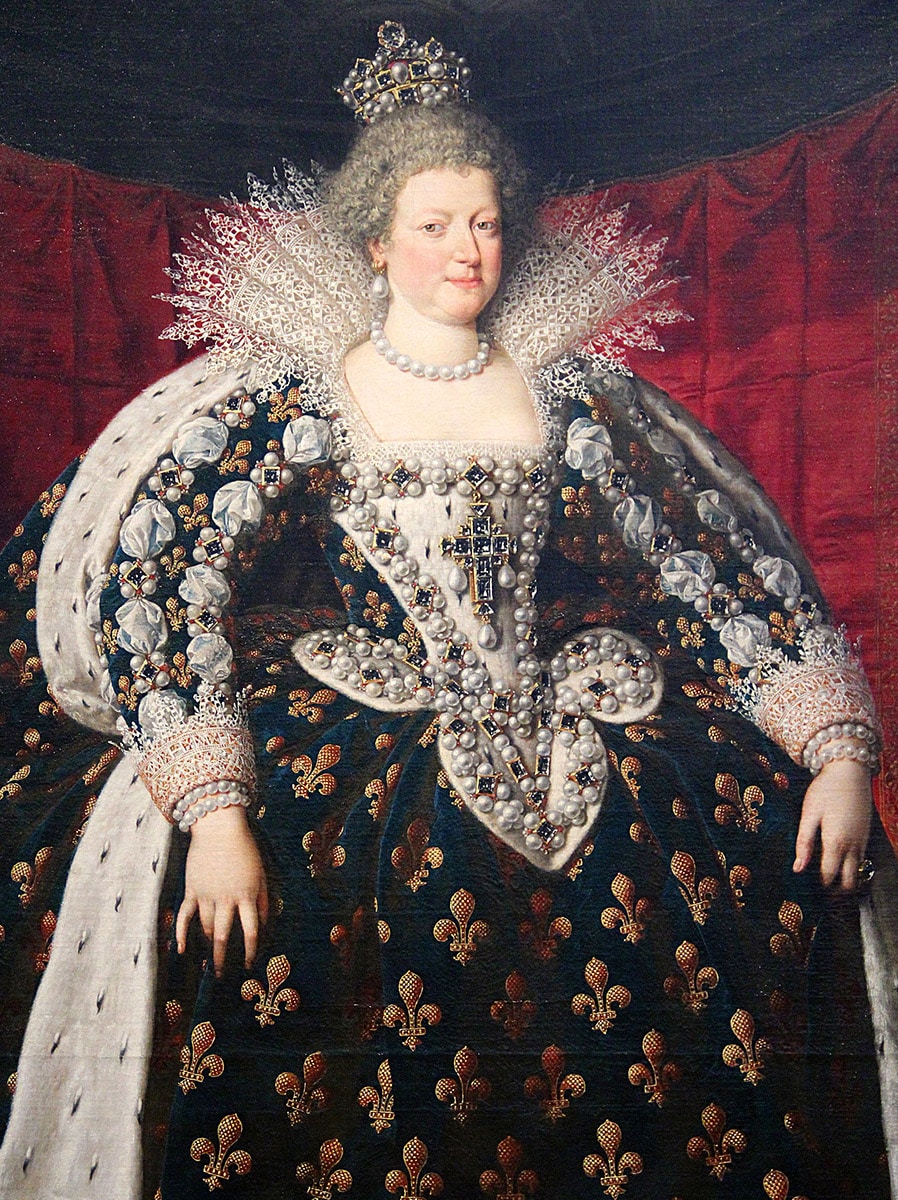
The Senate is housed in the Palais du Luxembourg, a building constructed from 1615 onwards by the architect Salomon de Brosse, at the request of Marie de Médicis. The Palais was completed in 1631, but Marie de Médicis moved in as early as 1625.
Over the years, the Palais passed from hand to hand. Among its illustrious owners were Louis XIV (1694), Philippe d’Orléans (1715), Louis XVI and Louis XVIII (1778). During the French Revolution, the palace was transformed into a prison.
In 1799, the Palais du Luxembourg became the “Conservative Senate”. Its architecture was radically altered to suit its new parliamentary function. In the early 19th century, the Salle des Séances and the Bibliothèque were built.
The Palais du Luxembourg retained its parliamentary function until the present day, apart from a few short periods at the end of the Second Empire, when it housed the Préfecture de la Seine, and during the German occupation, when it was requisitioned by the Luftwaffe General Staff.

View of the Luxembourg Palace, detail of Turgot’s plan, 1739
Visit the Senate
The Escalier d’Honneur
This staircase was built in 1800 to replace a former gallery on the second floor. The coffered ceilings echo the motifs seen on the Arc de Triomphe, while the six lions on the staircase are inspired by the Egyptian lions in the fountains of Rome, hence the presence of a pipe in their mouths.
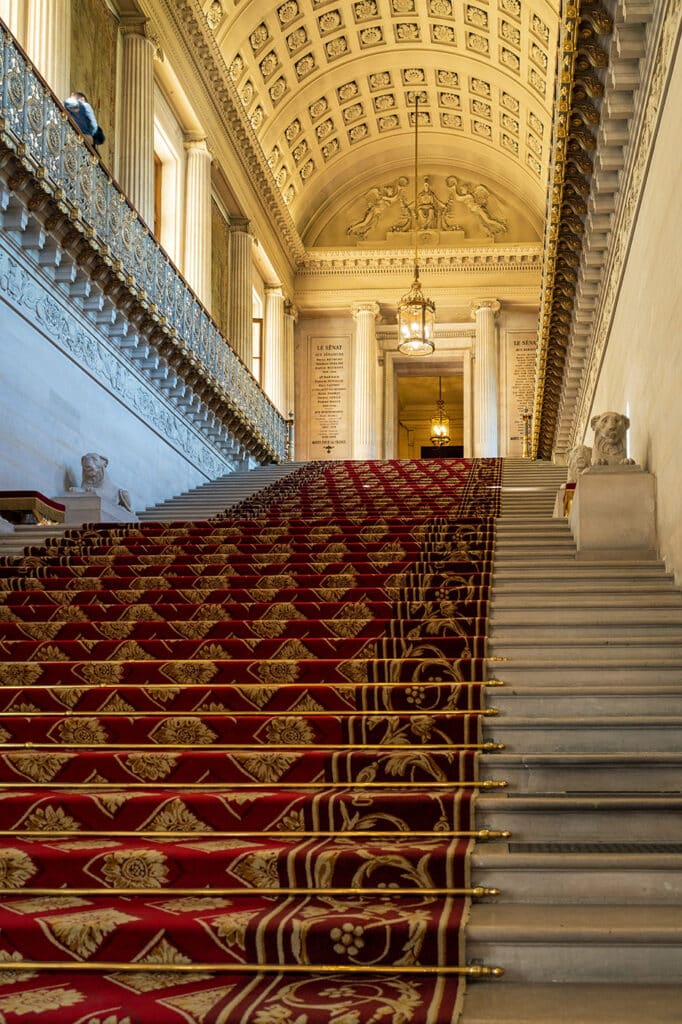
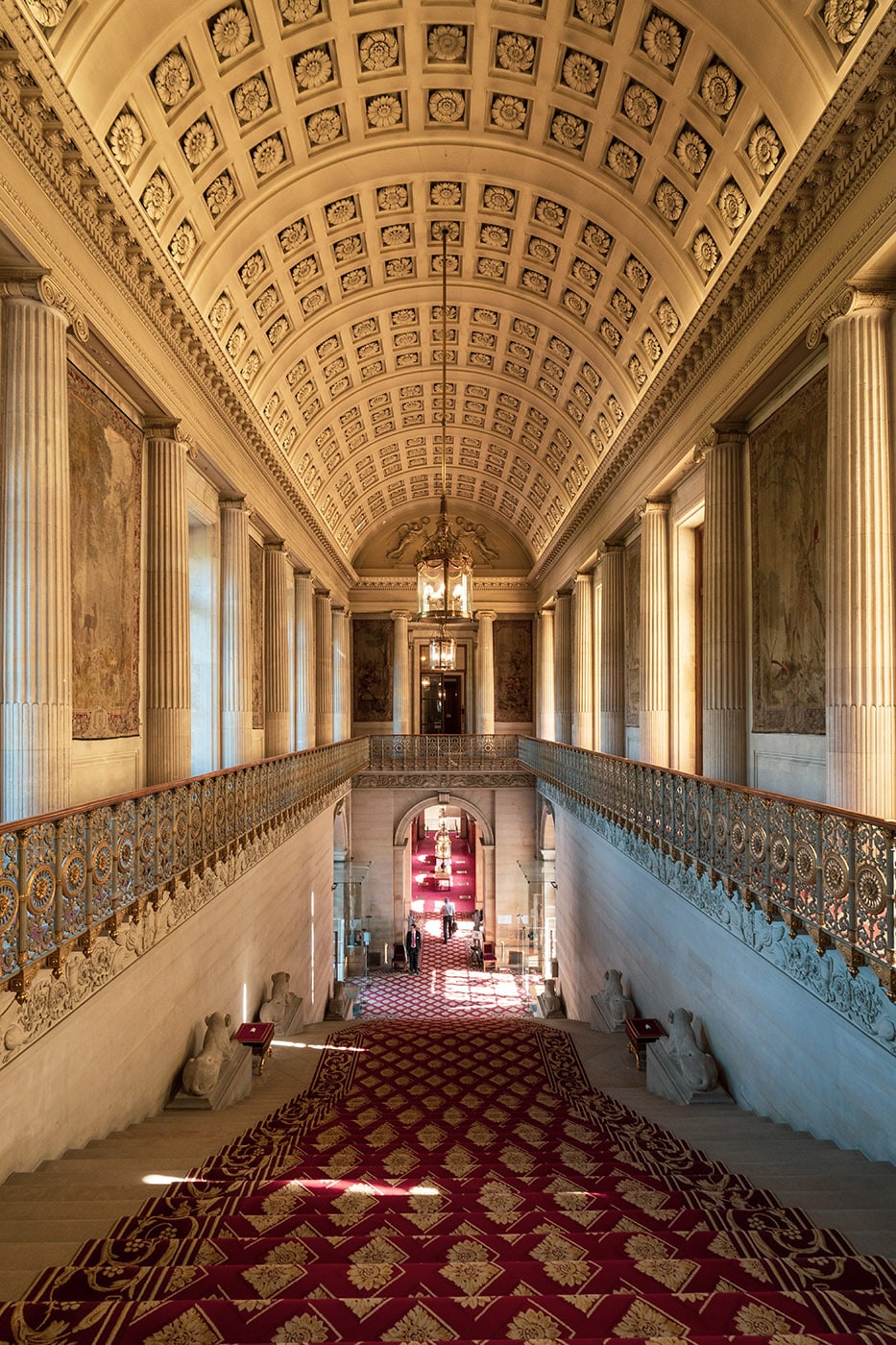
The Conference Hall
At 57 m long and 10.6 m wide, the impressive Conference Room spans over 600 m2! This space was remodeled in the mid-19th century, when Napoleon III commissioned the construction of a Throne Gallery for the Imperial Senate. Architect Alphonse de Gisors combined two salons and the former Salle des Séances to create this monumental room.
The decor was created at the same time (between 1852 and 1854) in the Second Empire style.
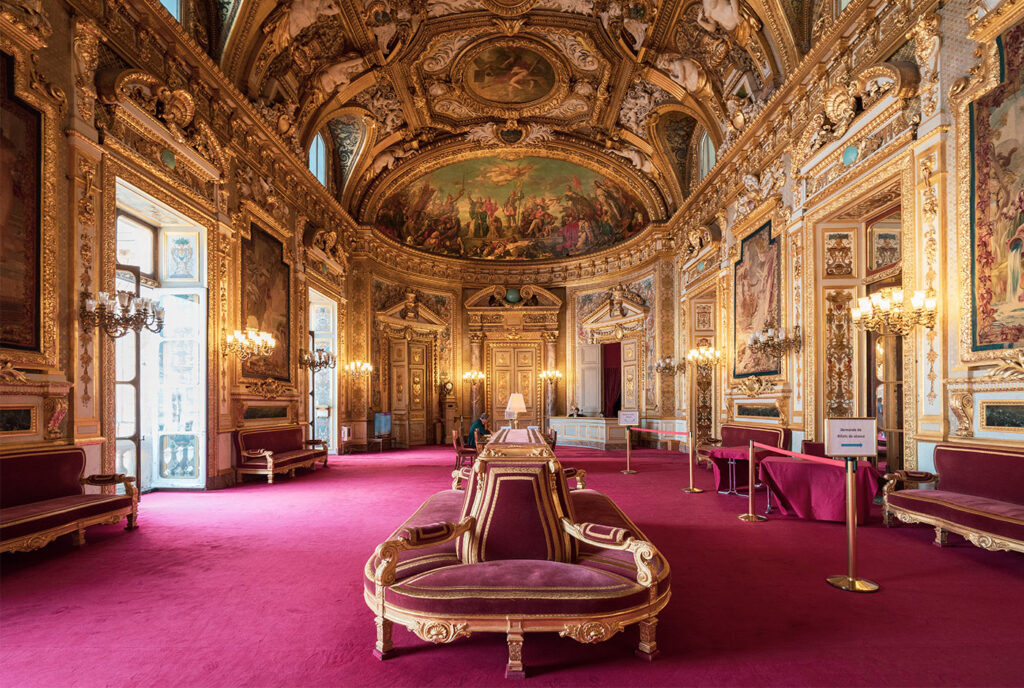
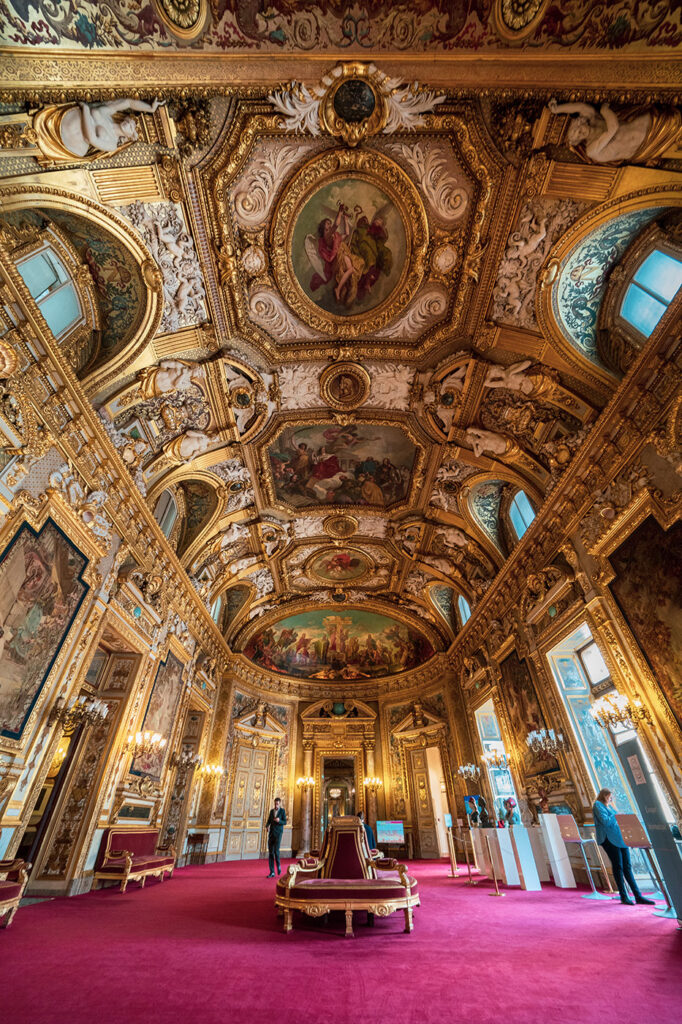
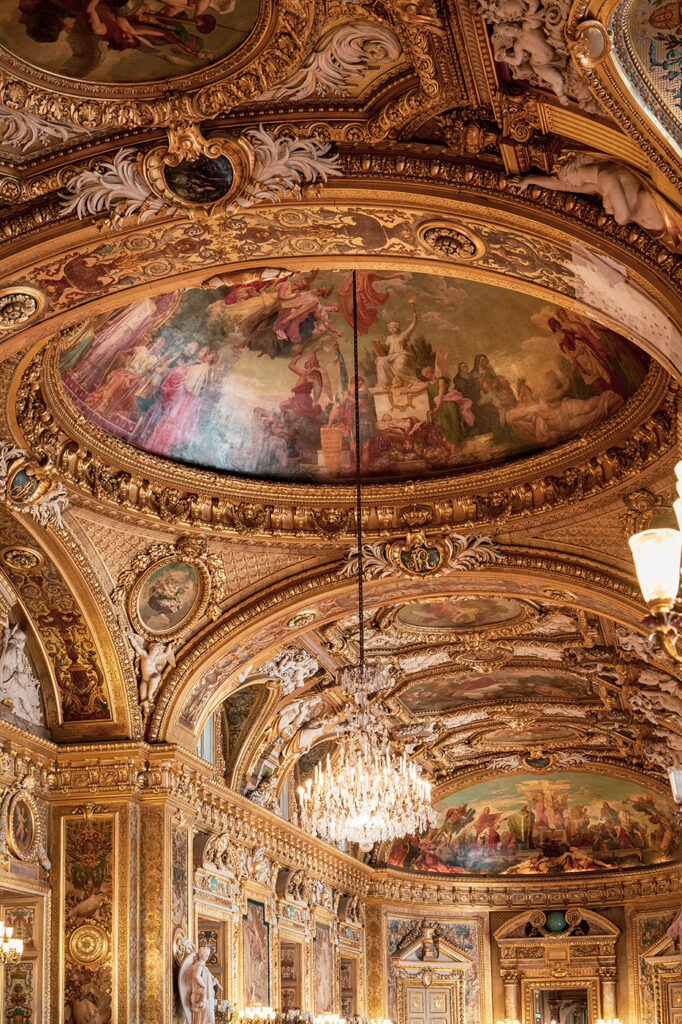
The library
The Senate library dates back to 1841. It, too, is the work of architect Alphonse de Gisors, who imagined this 52-meter-long gallery, flanked by seven windows overlooking the Luxembourg Gardens.

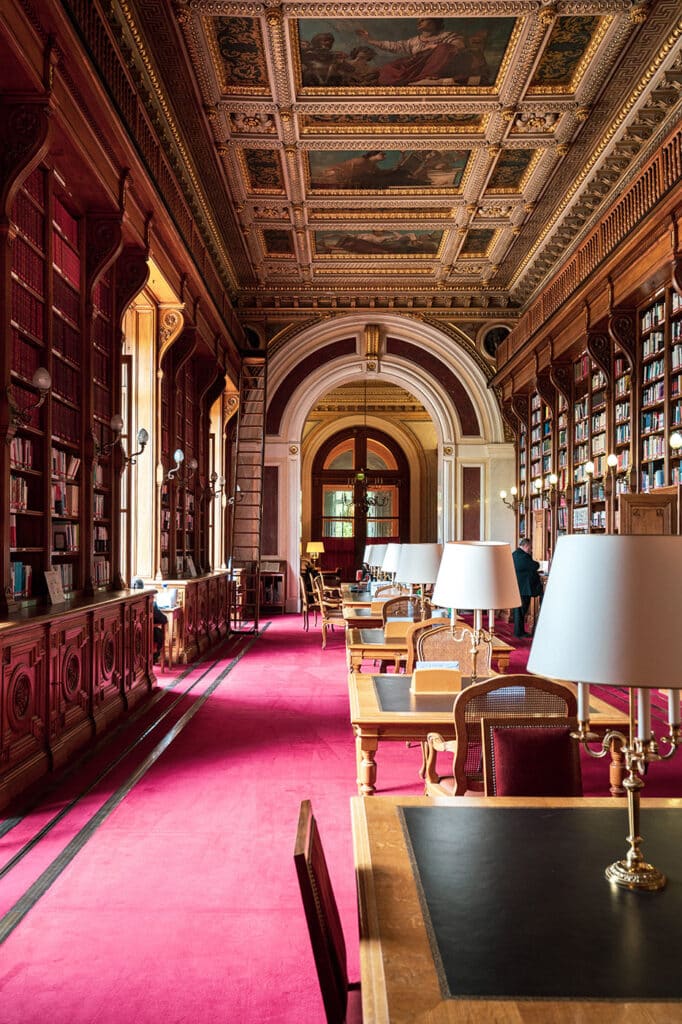
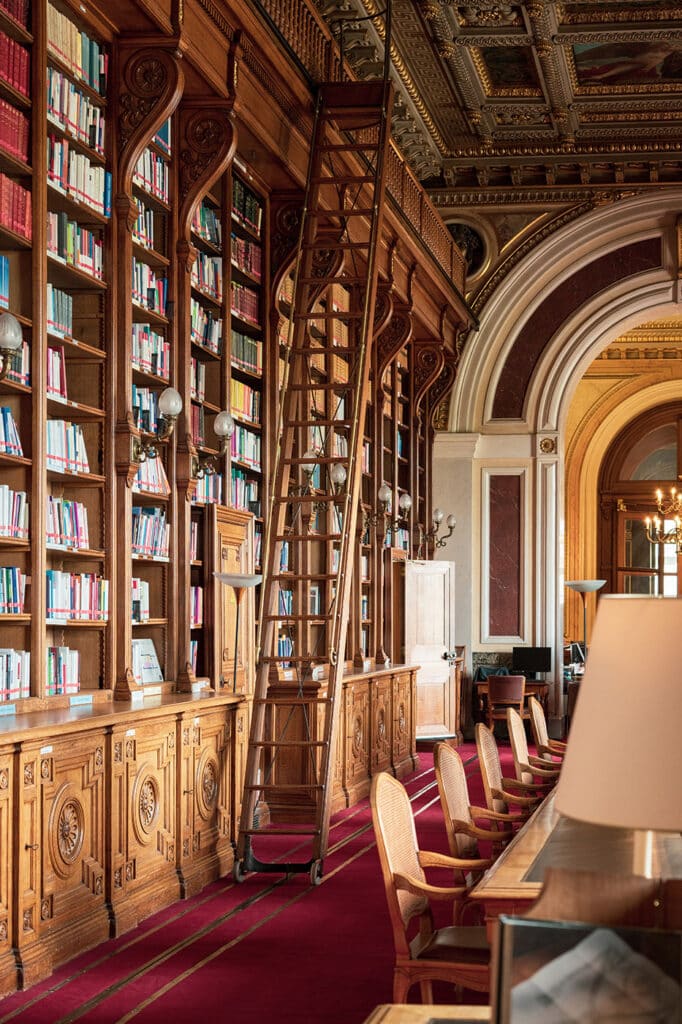
The Salle des Séances
Better known as the “hemicycle” because of its shape, the Salle des Séances is where senators meet. It was built between 1836 and 1841, again by architect Alphonse de Gisors.
It replaced the Conservative Senate Chamber, which had become too small to accommodate the growing number of senators.
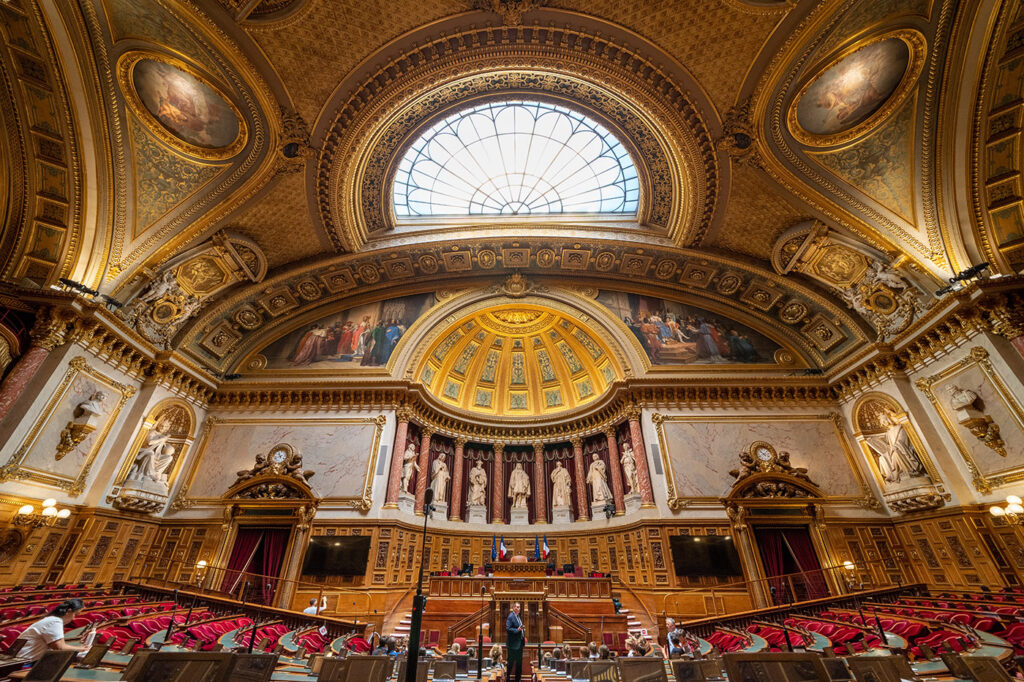
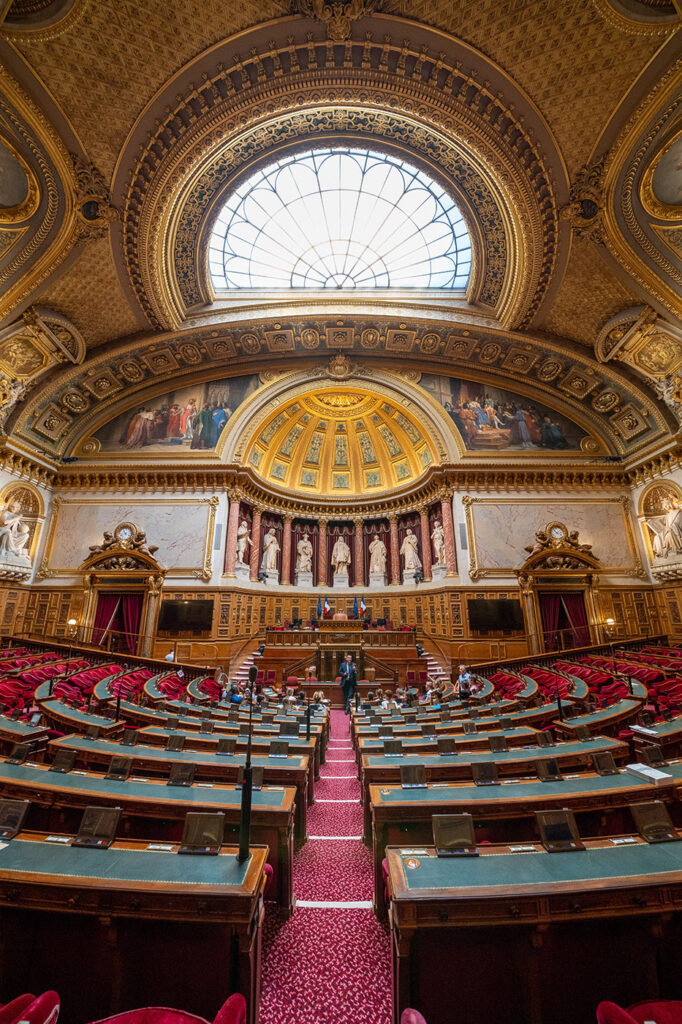
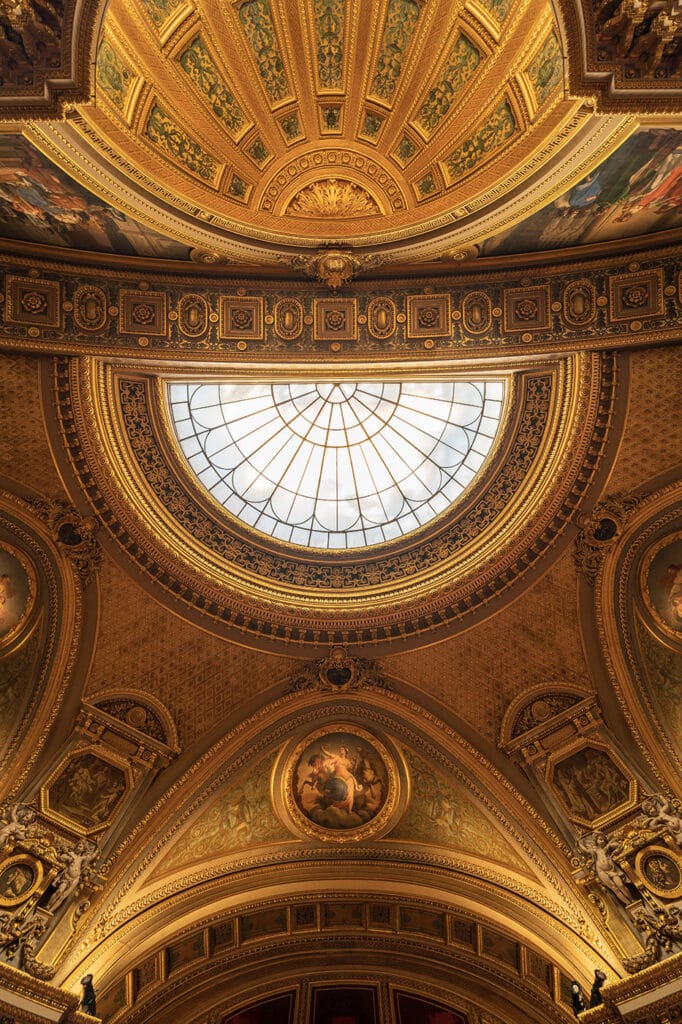
The bust gallery
This gallery is of great ceremonial importance. It is here that the President of the Senate enters the hemicycle.
He is accompanied by the 2nd infantry regiment of the Republican Guard, the only army authorized to visit the assemblies, being placed directly under the authority of the President of the Senate. This highly symbolic protocol reaffirms the submission of military power to civil authority at every session.
As its name suggests, the gallery is adorned with busts of great 19th-century figures: senators and famous politicians such as Adolphe Tiers, Sadi Carnot and Léon Gambetta.
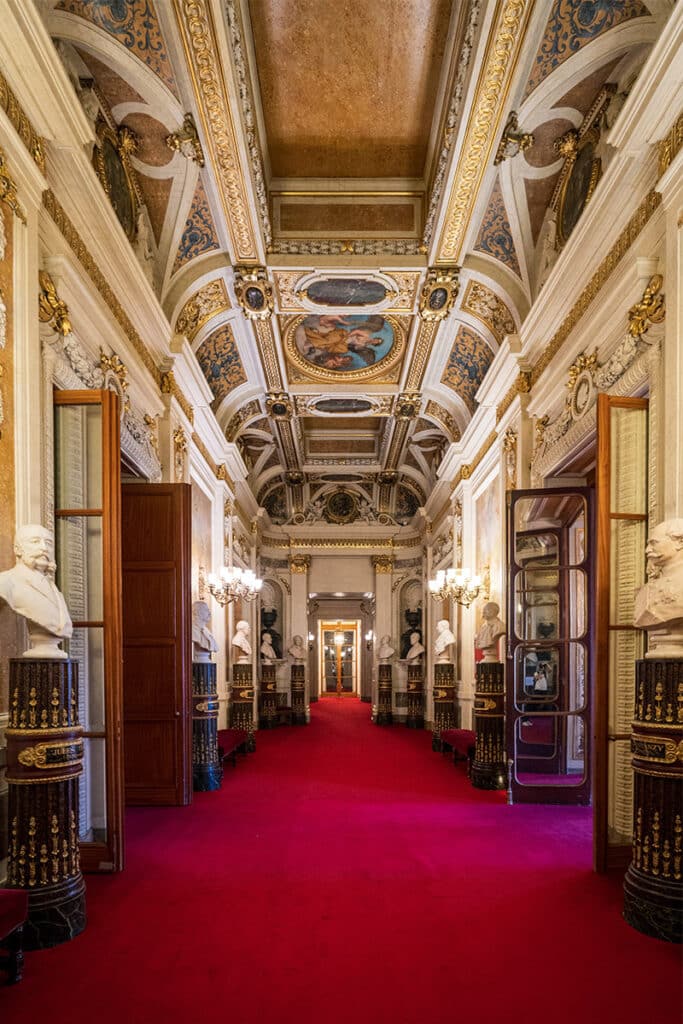
How to visit the Senate?
The Senate is open to the public every year during the Journées du Patrimoine (Heritage Days). Outside these days, Senators can organize visits for small groups, so you can contact your Senator to request a visit, although not all requests are successful due to the large number of requests.
Alternatively, a virtual tour is available on the Senate website.
How the Senate works
What is the role of the Senate?
According to the French Constitution (article 24, paragraph 4), the Senate “ensures the representation of the Republic’s local authorities”. The role of senators is to examine government bills, but they can also introduce new bills. They also monitor government action and propose reforms.
Did you know?!
Unlike the National Assembly, the Senate cannot be dissolved. Moreover, if the President of the Republic is unable to act, it is the President of the Senate who acts as head of state until a new President is elected. This situation has arisen on two occasions: in 1969, following the resignation of Charles de Gaulle, and in 1974, following the death of Georges Pompidou.
Who sits in the Senate?
348 senators sit in the Senate, elected for 6 years by indirect suffrage by 162,000 “grands électeurs”, i.e. elected municipal, departmental or regional representatives.
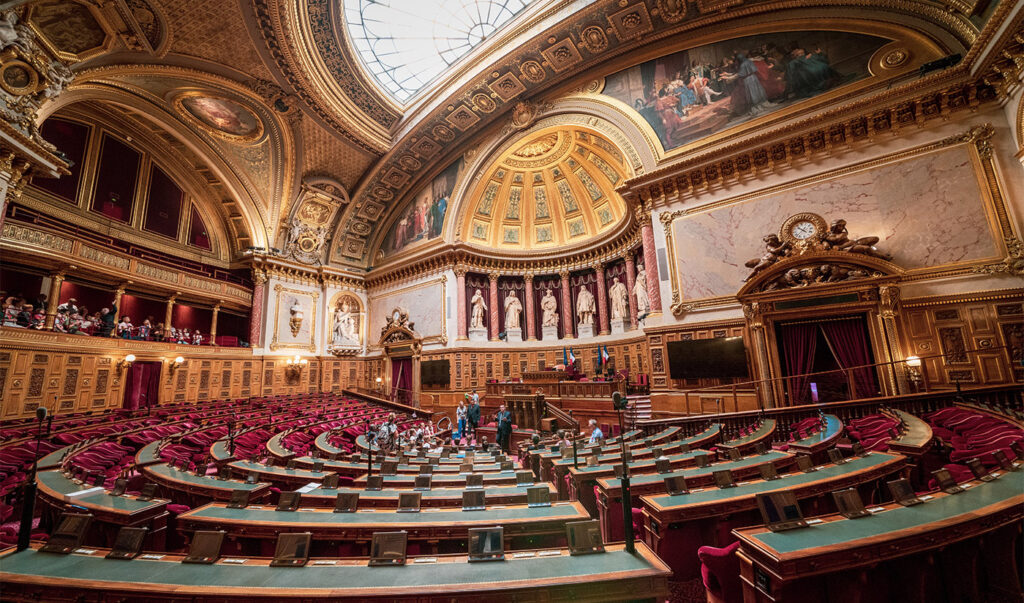
Senate committees
Each senator is a member of one of the 7 standing committees:
- Economic Affairs
- Foreign Affairs, Defense and Armed Forces
- Social Affairs
- Constitutional law, legislation, universal suffrage, regulations and general administration
- Culture, education and communication
- Regional planning and sustainable development
- Finance
These committees examine texts before the public session and can delete, add or modify articles. These committees also hear ministers, public officials and representatives of society.
In addition to these standing committees is the European Affairs Committee, which, as its name suggests, oversees European activities.
How much does a Senator earn?
Senators receive a parliamentary allowance of €5,820.04 gross per month, a residence allowance of €174.06 gross per month and a function allowance of €1,498.66 gross per month. Senators may also hold other offices and combine their allowances up to a limit of one and a half times the gross amount of the basic parliamentary allowance.
Senators also have the means at their disposal to carry out their duties. Each senator has :
- an office at the Palais du Luxembourg
- a budget of €8,696.95 for the gross remuneration of their staff
- travel expenses between Paris and their département.
Some senators also receive additional allowances for special responsibilities:
- 7,448.34 € for the President of the Senate
- 2,143.08 € for the vice-presidents of the Bureau ;
- 4,361.10 € for the Quaestors ;
- 734.34 € for Bureau secretaries;
- 2,143.08 € for political group chairmen;
- 2,143.08 for committee chairmen and general rapporteurs;
- 1,978.23 € for delegation chairmen;
- 914.18 for the Chairman of the Parliamentary Office for the Evaluation of Scientific and Technological Choices.
Adress:
Sénat – Palais du Luxembourg
15 rue de Vaugirard
Paris, France
Website:
senat.fr
Many thanks to Stéphane Artano, Senator for Saint-Pierre-et-Miquelon, and his colleague Ismaël M’Baye, for allowing me to visit the Senate.
A warm hello to the CM2 class from La Rochelle with whom I had the pleasure of experiencing this visit and who may be reading this article 😉
All photographs in this article are the property of Culturez-vous and may not be used without written permission.

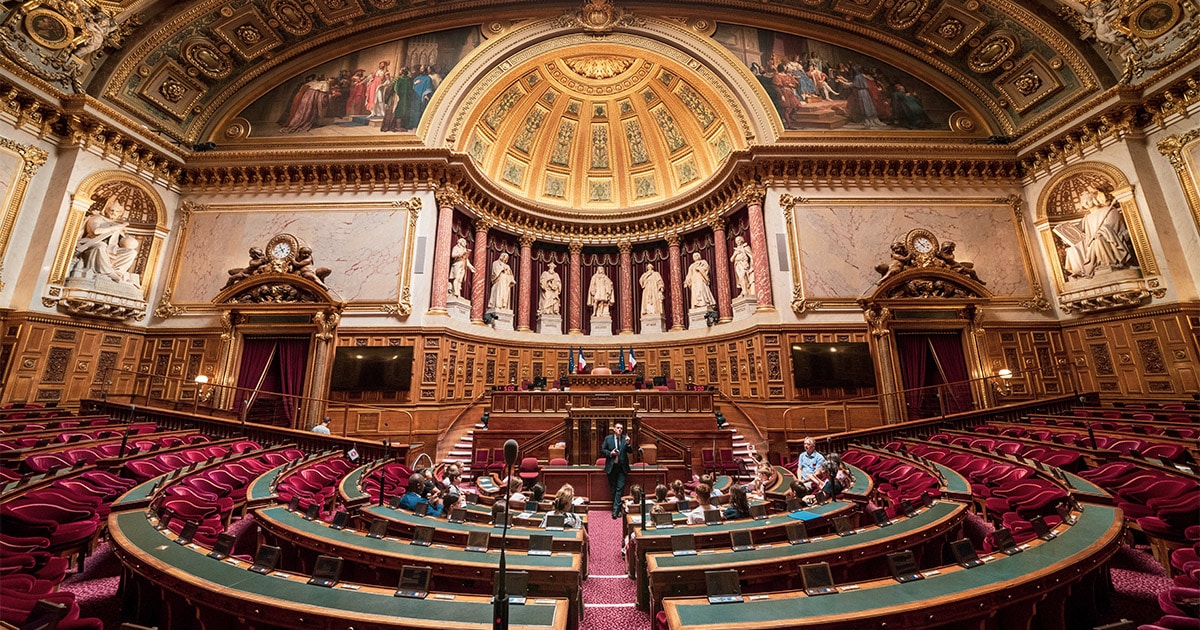



No Comments
Leave a comment Cancel